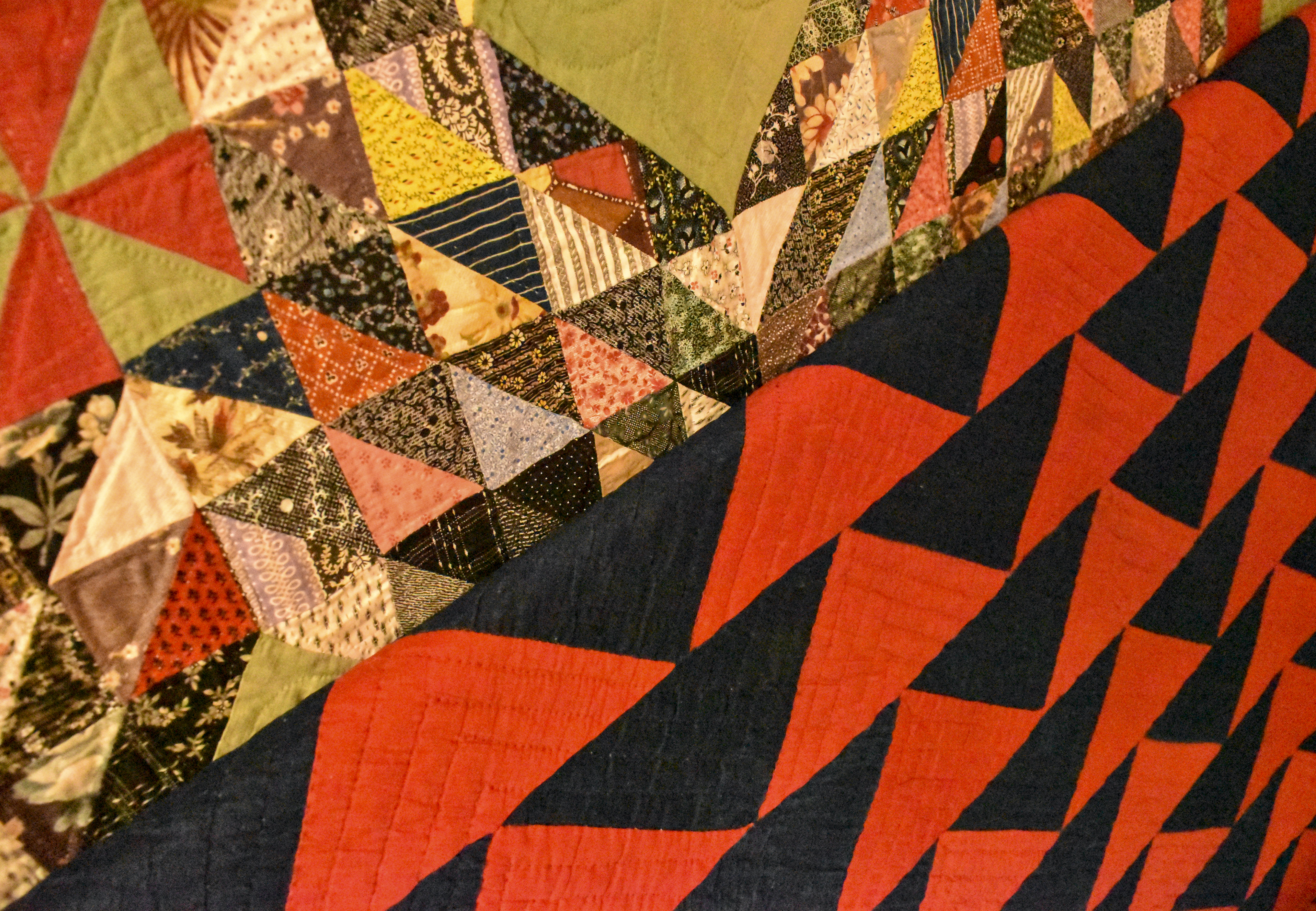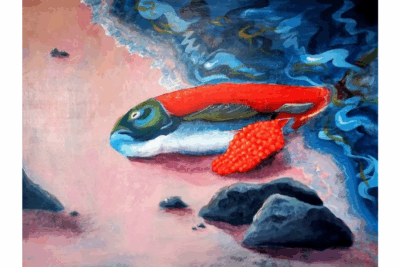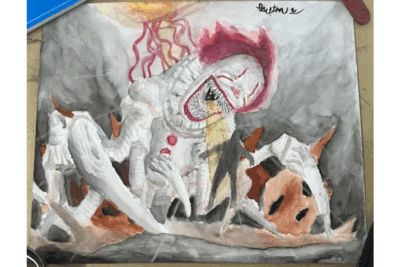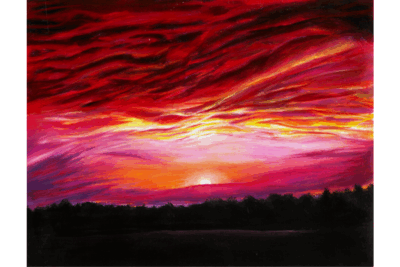Janneken Smucker, a Goshen College graduate, spoke on Sept. 16 in the Good Library Gallery about the 17 quilts on display for the exhibit “A Cabinet of Curiosities 3,” which showcases Anabaptist clocks, ceramics and quilts. Her talk brought audience members from in and around the GC community, with roughly 50 people in attendance.
Smucker is a fifth-generation quilt maker and currently serves as a professor of history at West Chester University in Pennsylvania. “I began making quilts when I was a teenager,” she said. “I was an artistic kid and loved to have projects going on.”Joe Springer, the curator for the Mennonite Historical Library, referred to her as a “quilt expert.”
Smucker has written two books on the subject, one of which “tracks quilting among the Amish and includes information on the marketing of Amish quilts and how they rose in popularity,” Springer said. “A second book is just about to come out,” he continued, “‘A New Deal for Quilts,’ and that is for the international quilt museum in Nebraska. It looks at quilting in the Works Progress Administration, which was the 1930 depression relief program.”
She also consults for the Smithsonian American Art Museum, and helped them develop an Amish quilt exhibit set to open in March 2024.
In her talk, she walked through the history of Anabaptist quilt making, notable features of blankets from each time period showcased and how designs developed over time.
“I don’t say this in any degrading way,” she began, “these are women with at most an eighth grade education who are laying out these designs. This is really highly ordered design work.”
On how to distinguish between Amish and Mennonite quilt designs, she said to “ask the maker what church they go to.”
In addition to the intricacies of each blanket, Smucker addressed some quilting myths that had been passed around.
“We don’t make universal claims about Amish quilt making. The Amish themselves didn’t have rules,” she said. “The Amish really adhered to community traditions. There were also really individual innovative quilt makers who pushed the boundaries of whatever their community design standards were or whatever their family preferences were and they did their own thing.
“These are really true artists, and if you think of them in the context [that] there were limited artistic outlets for women in many of these conservative communities, it’s no surprise that there were artists among them.”
Another myth she sought to debunk was about deliberate mistakes being put into quilts.
“I’m sure you’re familiar with this premise that there’s always a mistake intentionally put into a quilt, because ‘only God can make something that’s perfect,’” she began. “They say the same thing about Persian rugs, they say the same thing about Navajo blankets, they say the same thing about so many different crafts.”
When asked about a broken pattern in a 1936 patchwork quilt, she said, “If you had pointed this out to the maker, I’d expect she’d be embarrassed. … It’s so widespread and almost always coming from a dealer’s mouth rather than the quilt maker’s mouth.”
She closed out the talk with thoughts to calm some fears about the future of quilting: “Quilt making remains hugely popular,” she said. “It’s a bigger business now than it ever was. There are quilt celebrities. … My friend learned how to make quilts off of Instagram and YouTube during the pandemic. There is so much quilting activity taking place.”
“A Cabinet of Curiosities 3” will remain open in the Good Library Gallery until Nov. 12.




